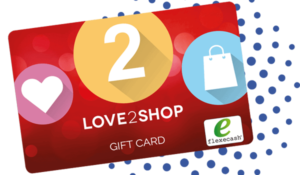Having no budget to implement your employee recognition ideas shouldn’t hold you back. All you need is a bit of thought, creativity and the will to execute your plans.
Cash-value rewards are exciting, and they do positively affect motivation and performance. But they should be treated as an amplification tool to recognition. Praise should be dished out regularly to employees, regardless of whether rewards are available or not.
Recognition works when it embraces an employees’ need to be valued. Everyone wants to know their work is worthwhile, and they want to feel that they’re contributing to something bigger than themselves.
So, it’s not good enough to simply shrug your shoulders and complain you have no budget. You can start with almost nothing and still show your employees that you value their daily contributions with regular recognition.
No-cost employee recognition ideas
1. Verbal recognition
 Say it and mean it. Let staff know the great work they do is valuable, and it’s helping your business reach its goals. Verbal recognition is personal and emotional. It can have great upticks in employee morale.
Say it and mean it. Let staff know the great work they do is valuable, and it’s helping your business reach its goals. Verbal recognition is personal and emotional. It can have great upticks in employee morale.
The only downsides are that it’s fleeting. And it’s difficult to connect verbal recognition with your company’s values without coming across as stilted.
2. Written recognition
Written recognition, such as a small note or a letter, is very effective. You can present it alongside a verbal recognition, and it becomes a little trophy. It’s also much easier to include a mention of your company’s values in a written statement.
It might seem like a small gesture, but taking time and care is always valuable to staff. You putting effort in validates the effort of staff and helps them see how valuable you think they are.
3. Team-level recognition
 Not every team has a stand-out star. Not every project has a lead individual to single out for recognition.
Not every team has a stand-out star. Not every project has a lead individual to single out for recognition.
Teams might achieve goals through exceptional teamwork, or problem solving. They might work across departments, or incorporate new ideas quickly. Equally, they might have acted on their own initiative to lay the groundwork for an upcoming project.
In these situations, it would be hard to single out one employee, so recognise the whole team. Call them in for a meeting, praise their exceptional efforts, and perhaps offer a reward of some kind.
A lot of companies that don’t have a budget to work with use flexibility as a reward. Time off for a whole team, an early-dart in an afternoon, or for individuals to use some extra flex-time.
4. Ask for feedback
Having a voice in the company matters as much as hearing one.
When someone demonstrates exceptional effort or achievement, listen to them. Offer the employee a chance to give their feedback on what’s happening in the company.
You might gain valuable insight from your top performers. And the employee will see that you don’t just treasure the value of your work. You see value in their thoughts and ideas too.
5. Boast achievements internally
 Lean on your internal communications to showcase the achievements.
Lean on your internal communications to showcase the achievements.
Even if you don’t have anything formal in place for internal communication, you can write an email. Depending on your position in the company, you might limit that to your department or division.
The wider your message goes, the bigger the impact of the recognition. But we understand not everyone has that luxury. If you have the seniority though, go company-wide.
If you’re casting the net wide, ask other managers for suggestions. They’ll nominate the stand-out performances from their teams. With care and consistency it could become something your employees look forward to seeing.
6. Share achievements externally
Share your teams’ wins with the world.
Take to social media, your website or your monthly newsletter. Use these mediums to highlight your employees’ recent successes.
Setting up a LinkedIn page, or a Facebook page, and connecting with your customers costs you little. And it would give your employees immense pride to have their work highlighted there.
Some companies squirm at the idea of putting things out in the public. We understand that. But as long as what they’re doing lines up with your values, you should fine.
7. Noticeboards or whiteboards as a makeshift wall of fame
 If you can spare one, whiteboards and noticeboards are extremely useful. It’s not as advanced as proper employee recognition software, but it has its own low-tech charm.
If you can spare one, whiteboards and noticeboards are extremely useful. It’s not as advanced as proper employee recognition software, but it has its own low-tech charm.
You’re limited only by what’s available around you. Written notes, photographs, letters from clients, certificates or more.
Your little wall of fame could quickly become a popular centrepiece of the office.
It won’t be measurable like a formal platform, but it will be fun for your staff. And it doesn’t have to go away if you do introduce a formal platform.
8. Measure achievements and progress
Measure progress towards personal and departmental goals. Acknowledge employees when they get past milestones on their way to those goals.
9. Celebrate milestones
It costs you nothing to write down and always make sure to acknowledge your employees’ milestones.
Birthdays, work anniversaries, or product launches. Anything that you know your employees will find valuable, make a note of it.
This one is so simple you can’t lose. And as we’ve outlined before, we think it’s important to recognise all employee longevity. Even after just one year.
Be creative with your employee recognition ideas
If you can peel off even a bit of extra cash, recognition possibilities start to open up.
Start with the culture of your company. Not just the formal values you lay out for staff to adhere to – the way your employees actually interact with each other.
Take that, and get creative with your employee recognition ideas. There are some really energising, funky recognition systems out there that don’t break the bank.
We’ve seen some creative, successful ideas put together with very little real budget.
10. Stickers or badges
Stickers are cheap, but fun and disposable. Pop one on an employees’ equipment, their workstation or their document folders.
Badges, also, give you a little creative outlet that’s easy to implement. Your staff might wear them on their uniforms, attach them to lanyards, or affix them to the back of their chair.
11. Picking the team lunch
 If you can afford to foot the bill for a team lunch, let a star performer pick the weekly or monthly meal, however best suits your team.
If you can afford to foot the bill for a team lunch, let a star performer pick the weekly or monthly meal, however best suits your team.
Team meals are a great way to coax your staff out of their shells a bit. Having one team member pick the meal might also give you a glimpse of your staff’s personalities and let them create deeper bonds together.
12. Time for projects
In today’s world, almost everyone is time poor. Professional lives blend and blur with the personal, and both can suffer for it. A lot of good ideas tend to go to rust when employees don’t get the time they need to develop them.
As an act of recognition, you might give an employee the space to develop an idea. If it’s a really good idea, the company could stand to gain from it being developed. And your employee will enjoy a sense of personal ownership over the project.
13. Charitable acts
 Put aside cash for a monthly donation to a smaller charity of choice. Big charities will barely notice a £50 donation, but many staff have charities close to their hearts. So target smaller charities with causes close to your staff’s lives.
Put aside cash for a monthly donation to a smaller charity of choice. Big charities will barely notice a £50 donation, but many staff have charities close to their hearts. So target smaller charities with causes close to your staff’s lives.
A donation in their name would mean a great deal to your employees, and would have a bigger impact on the charity.
Or perhaps your employee would appreciate a bit of time for volunteering for a cause of their choice. As we pointed out above, everyone is perpetually stretched for time. And extra activities like volunteering are often what takes the hit when staff allocate their time.
14. Group trophies
Rather than shelling out month after month to make an office full of trophies, just buy the trophy once. The monthly winner of the trophy gets to keep it at their workstation for a month.
For an extra twist on this employee recognition idea, make it a vote. Offer your staff the chance to vote on who should be recognised every month. You can read our blog here on why we favour a bit of democracy in the workplace when it comes to recognition. Our recognition platform, Shout!, is based on the idea that employees should have a say in what’s important and who gets recognised.
15. Car washing
Invite a car wash team on site to clean and detail someone’s car. Or maybe offer money off a bike service for a bicycle commuter. Train commuters are bit harder, but you can always be creative – Kindle books, books on tape, Acast podcast subscriptions. Just use your imagination and your knowledge of your employees.
Making your employee recognition ideas work
Good employee recognition ideas keep individual personalities in mind. Look around your office, and look at what makes them tick. Look at what generates humour, enthusiasm and participation in your teams. Take that as your starting point and use it as a launching point.
Just remember not to discard the basics. Whatever funky initiatives you decide on, keep them linked to your company culture and values.
Put values in the spotlight
 More than once in this piece we’ve mentioned values. We talk about them so often because they’re so important. They’re vital to shaping the attitude and the culture of your company.
More than once in this piece we’ve mentioned values. We talk about them so often because they’re so important. They’re vital to shaping the attitude and the culture of your company.
Focus on your company’s values to get more out of your recognition. Filtering recognition through your values puts employee behaviour through a lens. It lets them see how their work contributes to a greater whole.
This is a building block towards an engaged workforce.
Be consistent
Make recognising staff a habit. Build it into your daily, weekly and monthly work. A lot of staff will notice if you suddenly start then stop something or lose interest over time.
If you buy into the idea, make sure you show your staff that you buy into the idea.
It’s not complicated or expensive to recognise employees. Platforms and cash-value rewards have an impact, but they’re not the focus.
They’re a welcome addition but the crux of your effort needs to be about making employees’ value feel seen, welcome and treasured.
 Rewards are personal trophies when they’re dispensed for achievement. Mementos of an employee’s own excellence. Reminders of the exceptional things your staff are capable of.
Rewards are personal trophies when they’re dispensed for achievement. Mementos of an employee’s own excellence. Reminders of the exceptional things your staff are capable of. Because recognition is values driven, it doesn’t need to be associated directly with an award. Peer-to-peer recognition, especially, doesn’t have to accompanied by a reward.
Because recognition is values driven, it doesn’t need to be associated directly with an award. Peer-to-peer recognition, especially, doesn’t have to accompanied by a reward.

 You wanted to know if there was another level of performance that could be eked out of your biggest stars.
You wanted to know if there was another level of performance that could be eked out of your biggest stars. Every workplace has staff that are, at least outwardly, happy with below-average performance. You know they can do more, and you thought incentives would bring that out of them.
Every workplace has staff that are, at least outwardly, happy with below-average performance. You know they can do more, and you thought incentives would bring that out of them. Your plan was to introduce a system that incentivises the bulk of your staff to produce more outstanding performances, more often.
Your plan was to introduce a system that incentivises the bulk of your staff to produce more outstanding performances, more often. Ultimately, middle performers are where you should be focusing the bulk of your incentive efforts. The top workers produce the numbers without your instruction, and the bottom need a different remedy entirely. Your middle achievers make up most of your staff, but they’re the easiest group to forget about because they chug along happily, achieving their targets.
Ultimately, middle performers are where you should be focusing the bulk of your incentive efforts. The top workers produce the numbers without your instruction, and the bottom need a different remedy entirely. Your middle achievers make up most of your staff, but they’re the easiest group to forget about because they chug along happily, achieving their targets.


 Recognition for loyalty needs to be personalised and public.
Recognition for loyalty needs to be personalised and public.


 Say it and mean it. Let staff know the great work they do is valuable, and it’s helping your business reach its goals. Verbal recognition is personal and emotional. It can have great upticks in employee morale.
Say it and mean it. Let staff know the great work they do is valuable, and it’s helping your business reach its goals. Verbal recognition is personal and emotional. It can have great upticks in employee morale. Not every team has a stand-out star. Not every project has a lead individual to single out for recognition.
Not every team has a stand-out star. Not every project has a lead individual to single out for recognition. Lean on your internal communications to showcase the achievements.
Lean on your internal communications to showcase the achievements. If you can spare one, whiteboards and noticeboards are extremely useful. It’s not as advanced as
If you can spare one, whiteboards and noticeboards are extremely useful. It’s not as advanced as  If you can afford to foot the bill for a team lunch, let a star performer pick the weekly or monthly meal, however best suits your team.
If you can afford to foot the bill for a team lunch, let a star performer pick the weekly or monthly meal, however best suits your team. Put aside cash for a monthly donation to a smaller charity of choice. Big charities will barely notice a £50 donation, but many staff have charities close to their hearts. So target smaller charities with causes close to your staff’s lives.
Put aside cash for a monthly donation to a smaller charity of choice. Big charities will barely notice a £50 donation, but many staff have charities close to their hearts. So target smaller charities with causes close to your staff’s lives. More than once in this piece we’ve mentioned values. We talk about them so often because they’re so important. They’re vital to shaping the attitude and the culture of your company.
More than once in this piece we’ve mentioned values. We talk about them so often because they’re so important. They’re vital to shaping the attitude and the culture of your company.
 Hear us out! A really comfortable set of socks is un-ironically a fantastic gift for a colleague, despite the stigma around socks. Bonus points for getting a bit of personalisation in there.
Hear us out! A really comfortable set of socks is un-ironically a fantastic gift for a colleague, despite the stigma around socks. Bonus points for getting a bit of personalisation in there. Plastic straws are on the way out, but not everyone is happy with the paper straw, and some people with disabilities can’t enjoy their drinks without a straw.
Plastic straws are on the way out, but not everyone is happy with the paper straw, and some people with disabilities can’t enjoy their drinks without a straw. One of the modern greats in party games, and all-but guaranteed to produce at least one memorable moment per round.
One of the modern greats in party games, and all-but guaranteed to produce at least one memorable moment per round. For some people there’s really nothing more exciting than a new thermonuclear, sinus-searing hot sauce. A brilliant stocking filler and a great Secret Santa gift for colleagues with a capsicum addiction.
For some people there’s really nothing more exciting than a new thermonuclear, sinus-searing hot sauce. A brilliant stocking filler and a great Secret Santa gift for colleagues with a capsicum addiction. The
The